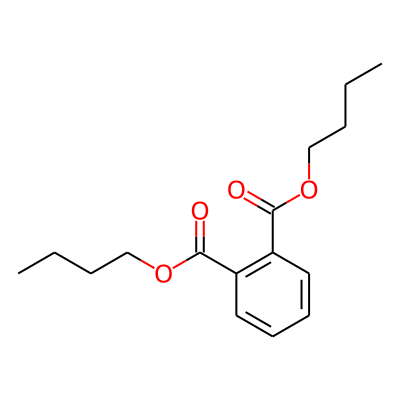

| Property name | Tool | Property value |
|---|---|---|
| Molecular weight (g/mol) | RDKit | 278.35 |
| Log P | RDKit | 3.6 |
| Topological polar surface area (Å2) | RDKit | 52.6 |
| Number of hydrogen bond acceptors | RDKit | 4 |
| Number of hydrogen bond donors | RDKit | 0 |
| Number of carbon atoms | RDKit | 16 |
| Number of heavy atoms | RDKit | 20 |
| Number of heteroatoms | RDKit | 4 |
| Number of nitrogen atoms | RDKit | 0 |
| Number of sulfur atoms | RDKit | 0 |
| Number of chiral carbon atoms | RDKit | 0 |
| Stereochemical complexity | RDKit | 0 |
| Number of sp hybridized carbon atoms | RDKit | 0 |
| Number of sp2 hybridized carbon atoms | RDKit | 8 |
| Number of sp3 hybridized carbon atoms | RDKit | 8 |
| Shape complexity | RDKit | 0.5 |
| Number of rotatable bonds | RDKit | 10 |
| Number of aliphatic carbocycles | RDKit | 0 |
| Number of aliphatic heterocycles | RDKit | 0 |
| Number of aliphatic rings | RDKit | 0 |
| Number of aromatic carbocycles | RDKit | 1 |
| Number of aromatic heterocycles | RDKit | 0 |
| Number of aromatic rings | RDKit | 1 |
| Total number of rings | RDKit | 1 |
| Number of saturated carbocycles | RDKit | 0 |
| Number of saturated heterocycles | RDKit | 0 |
| Number of saturated rings | RDKit | 0 |
| Number of Smallest Set of Smallest Rings (SSSR) | RDKit | 1 |

| Property name | Tool | Property value |
|---|---|---|
| Number of Lipinski’s rule of 5 violations | RDKit | 0 |
| Lipinski’s rule of 5 filter | RDKit | Passed |
| Number of Ghose filter violations | RDKit | 0 |
| Ghose filter | RDKit | Passed |
| Veber filter | RDKit | Good |
| Pfizer 3/75 filter | RDKit | Bad |
| GSK 4/400 filter | RDKit | Good |
| Weighted quantitative estimate of drug-likeness (QEDw) score | RDKit | 0.5383 |

| Property name | Tool | Property value |
|---|---|---|
| Bioavailability score | SwissADME | 0.55 |
| Solubility class [ESOL] | SwissADME | Soluble |
| Solubility class [Silicos-IT] | SwissADME | Moderately soluble |
| Blood Brain Barrier permeation | SwissADME | Yes |
| Gastrointestinal absorption | SwissADME | High |
| Log Kp (Skin permeation, cm/s) | SwissADME | -4.8 |
| Number of PAINS structural alerts | SwissADME | 0.0 |
| Number of Brenk structural alerts | SwissADME | 1.0 |
| CYP1A2 inhibitor | SwissADME | Yes |
| CYP2C19 inhibitor | SwissADME | Yes |
| CYP2C9 inhibitor | SwissADME | No |
| CYP2D6 inhibitor | SwissADME | No |
| CYP3A4 inhibitor | SwissADME | No |
| P-glycoprotein substrate | SwissADME | No |

| Protein identifier | HGNC symbol | Combined score from STITCH database |
|---|---|---|
| ENSP00000206249 | ESR1 | 728 |
| ENSP00000258743 | IL6 | 700 |
| ENSP00000262209 | TRPA1 | 700 |
| ENSP00000270202 | AKT1 | 700 |
| ENSP00000275493 | EGFR | 700 |
| ENSP00000312286 | PLA2G1B | 794 |
| ENSP00000314151 | KLK3 | 700 |
| ENSP00000316786 | HSD11B2 | 700 |
| ENSP00000318820 | TPO | 700 |
| ENSP00000324806 | GSK3B | 700 |
| ENSP00000334061 | HDAC6 | 700 |
| ENSP00000336528 | NR1I2 | 700 |
| ENSP00000350941 | SRC | 700 |
| ENSP00000356958 | NR1I3 | 938 |
| ENSP00000361125 | VEGFA | 700 |
| ENSP00000363822 | AR | 734 |